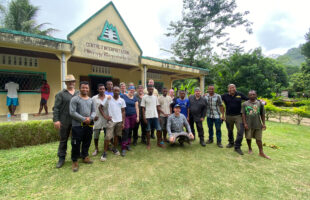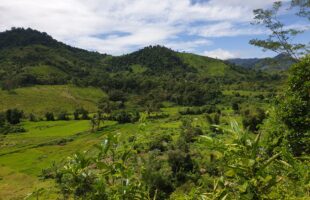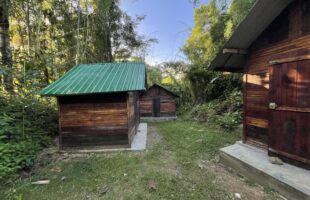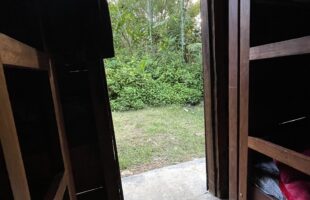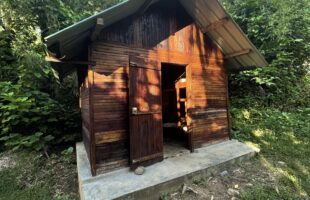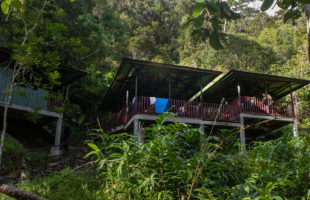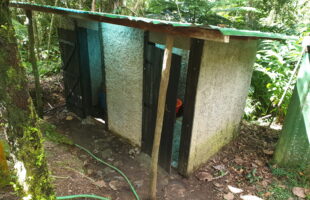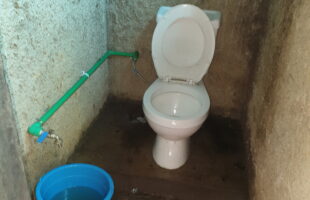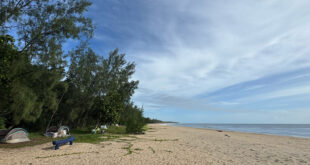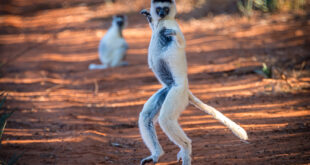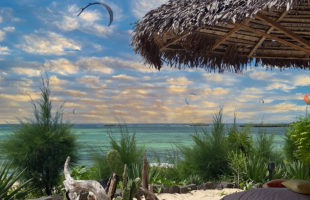Marojejy:
Marojejy National Park is one of the most biodiverse and beautiful in Madagascar, but also one of the most difficult to travel to. An “advanced paradise”! The Malagasy words maro and jejy have various meanings, including “many stones” and “much rain”, but also “many animals” and “many ancestral spirits”.
Location:
Marojejy National Park is located in the northeast of Madagascar on the slopes of the sacred mountain range of the same name in the province of Sava. About 60 km to the east is the “vanilla capital” Sambava. The RN3b, which passes the park, reaches from there to Andapa in the west. The Marojejy National Park is difficult to reach due to its location and the lack of infrastructure. The only safe way is to fly from the capital Antananarivo to Sambava and then travel by car or bus by road to the park office. The land route from Ambilobe to the east via Vohémar on the northeast coast and then south towards Sambava has also been passable again since 2022.
Information about the National Park:
In 1948, Prof. Henri Humbert of the Natural History Museum in Paris, founder of the national park, visited this spot of earth and was so overwhelmed by the flora and fauna that he dedicated his book “Miracles of Nature” to Marojejy. Barely four years later, at his insistence, the area was placed under protection. Only scientists were allowed to visit. Since 1998, Marojejy has officially been considered a national park and is thus open to all travellers again. In 2007, it was declared a UNESCO World Nature Heritage Site.
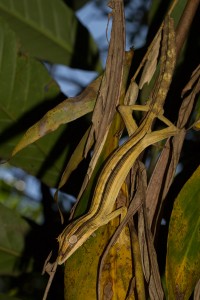
The national park is about 600 km² in size. Its highest point is over 2100 m, making it one of the highest parks in Madagascar. From the deepest rainforest to the high mountain forest, there is everything the country has to offer in terms of climatic zones. Various hiking routes leave directly from the campground, the longest excursions can take several days. Many rivers and streams, waterfalls as well as steep differences in altitude make the tours through the park a fantastic experience, but also demand a lot from the nature lover. Marojejy is certainly not easy to walk!
The Tsimihety living around the park and some mafia structures now pose a massive threat to the entire national park. Similar to Masoala, slash-and-burn and illegal logging (rosewood, palisandre) have been going on for several years and are difficult to control.
Climate:
As in most areas of north-eastern Madagascar, the weather of Marojejy is dominated by a tropical, warm and humid climate. In summer, temperatures reach over 30°C almost daily, and in winter there can even be frost on the tops of the national park. In the forest itself, it is slightly cooler and it rains almost daily. The extremely high humidity makes park visitors tire quickly and makes every hike a challenge. A good physical condition is a prerequisite for a visit to Marojejy National Park.
Infrastructure:
There are only two small hut villages in the vicinity of the national park, which do not offer accommodation. The park office is located directly on the RN3b, where you pay entrance fees and organise cooks and guides. From here it is a 6 km walk to the park entrance. The path is not difficult but leads through a kind of savannah between rice fields, where it is extremely hot and walking is therefore very, very strenuous. Once you have reached the park entrance and the shady forest, it is still several kilometres to Camp Mantella (Camp 1) and several hours of extremely strenuous walking to Camp 2 (Camp Marojejya), which is much higher up. The last kilometre of the ascent alone covers 450 metres in altitude.
The highest camp 3 (Camp Simpona) cannot be reached by most travellers in one day, although it is “only” a few kilometres to the camp below. However, the trails are narrow, steep and impassable, very slippery in the rain and several streams have to be crossed. Sometimes you even have to cross steep rock slabs secured with ropes. In combination with the climate, which is extreme for Europeans, every kilometre becomes a sporting feat and only with a tenacious will can you make it all the way to the top. However, the breathtaking view and the campground in the middle of the rainforest compensate for every effort, leeches and countless mosquito bites.
Caution: The official kilometre information on the signs on site is a good 20 years old and no longer up to date. Since every year new paths have to be found around fallen trees, the path from the park office to Camp Marojejya is currently almost 20 (!) instead of the 11.9 km indicated (as of 2025).
The three camps are each equipped with covered cooking and eating areas, running water and basic sanitary facilities. There is no electricity. In 2022, Camp Mantella and Camp Marojejya were equipped with new communal huts with tin roofs and concrete foundations by Lemur Conservation Foundation. In Camp Mantella, all huts were renovated with concrete foundations, wooden huts and tin roofs as well as new bunk beds. One of these cabins is already available at Camp Marojejy, the other cabins there are old models covered with lorry tarpaulins. Camp Simpona still has a few old huts covered with lorry tarpaulins and a wooden communal and cooking hut, which is now quite rickety. Both Camp Mantella and Camp Marojejya offer small tent areas as an alternative (tents have to be brought, there are none available on site).
Drinks, food and camping equipment must be brought from Sambava. Porters from the villages can be organised at the park office, who will transport any luggage up to the desired camp and back down again at breathtaking speed for a small fee.
Flora and Fauna:
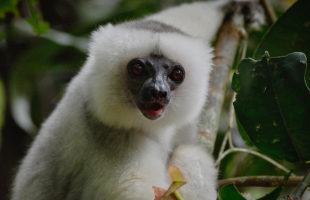
The flora of Marojejys offers something for every taste, from giant jungles over 50 m high to delicate orchids: 275 different ferns, around 300 epiphytes and 50 palm species alone make the forest an unforgettable, magical place. The list of life forms found only here is extremely long, and by no means all plants and animals have even been described.
Marojejy is the last remaining habitat of the extremely rare and critically endangered Silky Sifakas (Propithecus candidus), called the “angels of the forest” because of their white, long fur – and another ten lemur species. The silky sifakas are among the 25 most endangered species worldwide. Finding them requires a full day of adventurous climbing across the forest, but an encounter with these last creatures of their kind is unforgettable. The slightly less rare Aye-Aye can occasionally be spotted at night among the dense greenery. If you ever come face to face with this rare, absurd-looking forest troll, you can consider yourself truly lucky. The bamboo lemurs (Hapalemur occidentalis) and other inhabitants of the forest are much easier to see and often come right up to the camps. Other lemurs can also be observed quite closely during the walks.
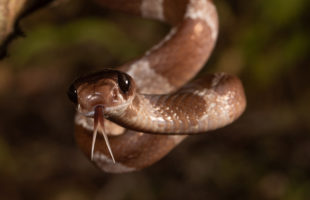
For reptile lovers, Marojejy is a true paradise. There are over 150 species of amphibians and reptiles here. Around Camp Mantella, Mantella nigricans and Mantella laevigata can be found in large numbers. Smaller chameleons like Calumma cf. radamanus, Calumma marojezense and Brookesia griveaudi are native around the camp. If you make it further up to Camp Simpona, you can spot the fascinating terrestrial chameleons Brookesia betschi with its long bony projections above the eyes and the pretty Calumma guillaumeti. The small Calumma uetzi, which was only described for the first time in 2018, can be found sleeping in the dense branches at night if you are lucky. There are also several species of tiny chameleons, all of which are among the smallest amniotes on earth: Brookesia karchei and Brookesia tedi, also just described in 2019, can be found in Marojejy.
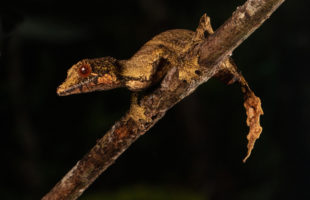
The national park offers a whole wealth of snakes, including the quite common Parastenophis betsileanus and the extremely rare but beautiful Liophidium pattoni. The rare day gecko Phelsuma masohoala lives at the park entrance of Marojejy, further up Phelsuma guttata and Phelsuma dorsivittata are regular visitors on bamboo trunks and hut roofs.
Marojejy is also the Mecca of the leaf-tailed gecko. Not only the giant among the leaf-tailed geckos, Uroplatus giganteus, has its home here. Further up the mountain live the species Uroplatus fangorn, Uroplatus finaritra and Uroplatus fivehy, which were only described in 2019 and 2020. In the wild ginger directly at the waterfall near Camp Marojejya, on the other hand, you can already find the perfectly camouflaged Uroplatus lineatus. If you search the foliage on the ground for a long time and in a specific, very small area, you might even catch sight of the hitherto rarely photographed, colourful Brookesia vadoni with many skin appendages – a real rarity.
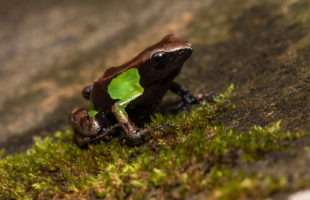
In the middle of the Marojejy rainforest lives the Helmeted vanga (Euryceros prevostii), which is a challenge for every bird photographer. It is both the symbol and mascot of the national park. Frog lovers can enjoy countless, colourful species of Mantella and other frogs, which croak loudly everywhere at night and are very easy to find even during the day. A good 120 bird species populate Marojejy and form a unique, beautiful backdrop for excursions.
Marojejy is a unique, fantastic paradise with extreme biodiversity that you won’t find anywhere else in Madagascar.
 MADAMAGAZINE Your Magazine about Madagascar
MADAMAGAZINE Your Magazine about Madagascar
